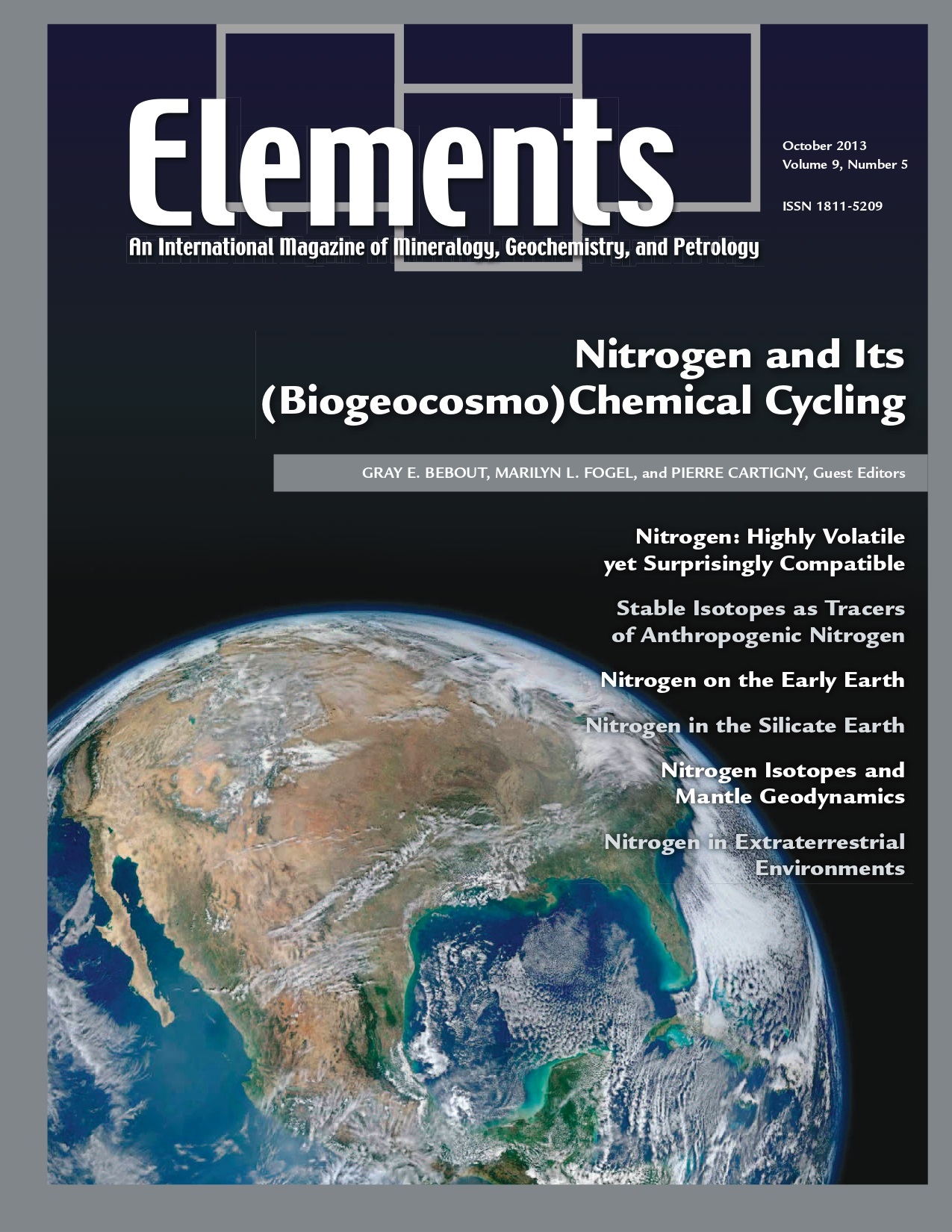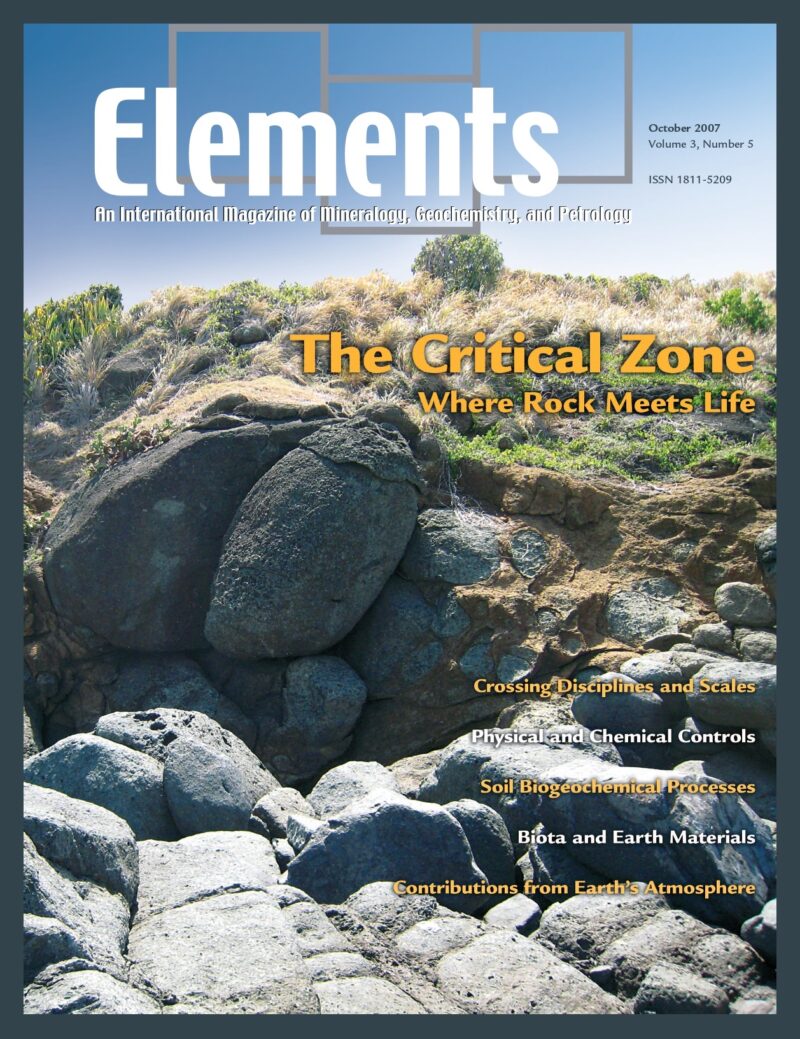
Granitic Pegmatites, August 2012, Vol. 8, No. 4
June 28, 2024
Kaolin, June 2014, Vol. 10, No. 3
June 28, 2024Nitrogen And Its (Biogeocosmo) Chemical Cycling, October 2013, Vol. 9, No. 5
$20.00
Nitrogen is the most abundant element in Earth’s atmosphere and a key component of the biosphere. It is also a critical part of the surface/near-surface cycling of nutrients, thus directly impacting our lives.
Nitrogen And Its (Biogeocosmo) Chemical Cycling
October 2013, Vol. 9, No. 5
Nitrogen is the most abundant element in Earth’s atmosphere and a key component of the biosphere. It is also a critical part of the surface/near-surface cycling of nutrients, thus directly impacting our lives. Changes in the biogeochemical cycling of nitrogen through Earth’s history could reflect fundamental changes in its pathways from inorganic to biological reservoirs in response to change in the environment (e.g. oxygen fugacity in the atmosphere and oceans). Recognition of the importance of nitrogen to life on Earth, and likely elsewhere in the Solar System, has led to the mantra “Follow the Nitrogen” as one vehicle for focusing efforts in the search for extraterrestrial life. Nitrogen serves as a useful tracer of the transfer of “organic” signatures into the deep Earth (in records preserved in metamorphic and igneous rocks and in volcanic gases and rocks). It has been speculated that biological fixation of nitrogen and storage in rapidly forming continental crust has led to drawdown of nitrogen from the early-Earth atmosphere, strongly influencing the chemical evolution of the atmosphere and related surface conditions.
Why You’ll Love Elements Magazine:
- Expert Contributors: Articles written by renowned researchers in the field of geoscience.
- Engaging Content: Join a community of readers who are passionate about Elements.
- Exceptional Quality: Each issue is printed on high-quality paper with stunning visuals and detailed illustrations that bring complex scientific concepts to life.
Order your copy of the October 2013 issue of Elements magazine today and explore nitrogen and its (biogeocosmo) chemical cycling.
Related products
-
Supervolcanoes, February 2008, Vol. 4, No. 1
$20.00Explosive super-eruptions from large volume, shallow magma systems lead to enormous and devastating pyroclastic flows, the formation of gigantic collapse calderas, and deposition of volcanic ash over continent-sized areas. Recognition that future eruptions from these “supervolcanoes” will undoubtedly have severe impacts on society—and perhaps on life itself—has led to recent public and media interest.
-
The Critical Zone, October 2007, Vol. 3, No. 5
$20.00The Critical Zone (CZ) encompasses all fluid, mineral, gaseous, and biotic components from the outer envelope of vegetation down to the lower limit of groundwater. It supports much of life on Earth.
-
Carbon Dioxide Sequestration, October 2008, Vol. 4, No. 5
$20.00Storage of carbon in the subsurface involves introduction of supercritical CO2 into rock formations beneath the surface of the Earth, typically at depths of 1000 to 4000 meters. Although CO2 is a relatively benign substance, the volume being considered is large.




